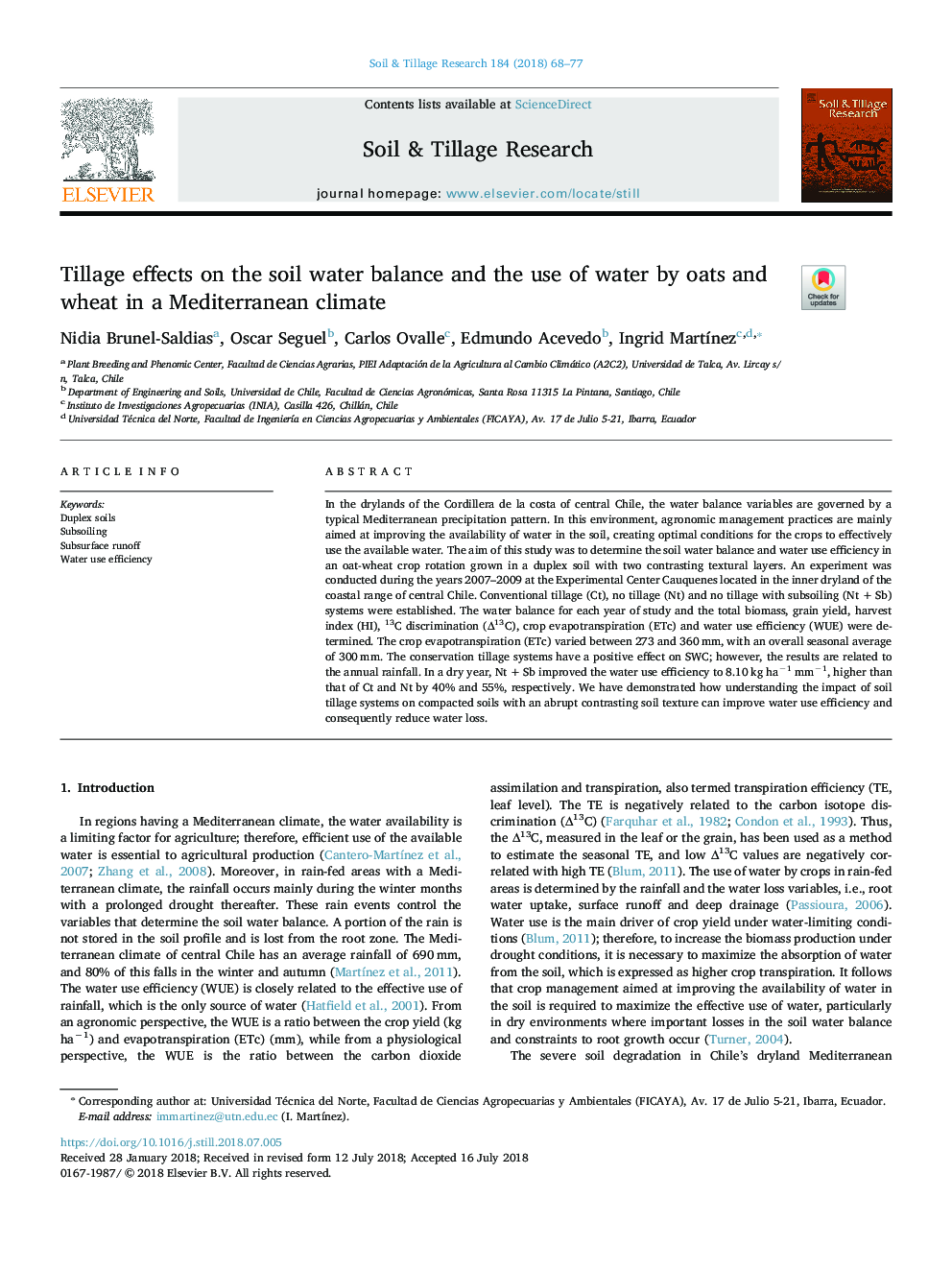| Article ID | Journal | Published Year | Pages | File Type |
|---|---|---|---|---|
| 6772889 | Soil and Tillage Research | 2018 | 10 Pages |
Abstract
In the drylands of the Cordillera de la costa of central Chile, the water balance variables are governed by a typical Mediterranean precipitation pattern. In this environment, agronomic management practices are mainly aimed at improving the availability of water in the soil, creating optimal conditions for the crops to effectively use the available water. The aim of this study was to determine the soil water balance and water use efficiency in an oat-wheat crop rotation grown in a duplex soil with two contrasting textural layers. An experiment was conducted during the years 2007-2009âat the Experimental Center Cauquenes located in the inner dryland of the coastal range of central Chile. Conventional tillage (Ct), no tillage (Nt) and no tillage with subsoiling (Ntâ+âSb) systems were established. The water balance for each year of study and the total biomass, grain yield, harvest index (HI), 13C discrimination (Î13C), crop evapotranspiration (ETc) and water use efficiency (WUE) were determined. The crop evapotranspiration (ETc) varied between 273 and 360âmm, with an overall seasonal average of 300âmm. The conservation tillage systems have a positive effect on SWC; however, the results are related to the annual rainfall. In a dry year, Ntâ+âSb improved the water use efficiency to 8.10âkg haâ1âmmâ1, higher than that of Ct and Nt by 40% and 55%, respectively. We have demonstrated how understanding the impact of soil tillage systems on compacted soils with an abrupt contrasting soil texture can improve water use efficiency and consequently reduce water loss.
Related Topics
Physical Sciences and Engineering
Energy
Renewable Energy, Sustainability and the Environment
Authors
Nidia Brunel-Saldias, Oscar Seguel, Carlos Ovalle, Edmundo Acevedo, Ingrid MartÃnez,
